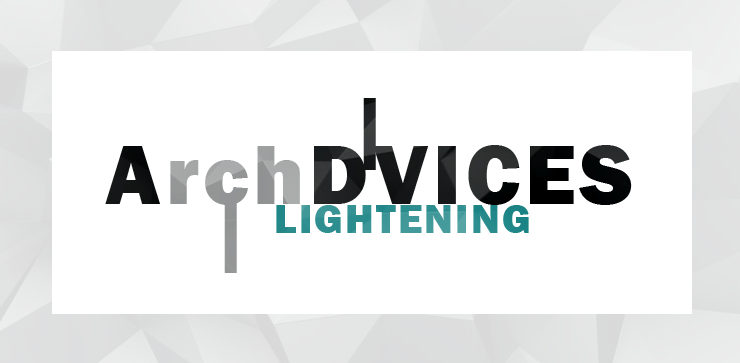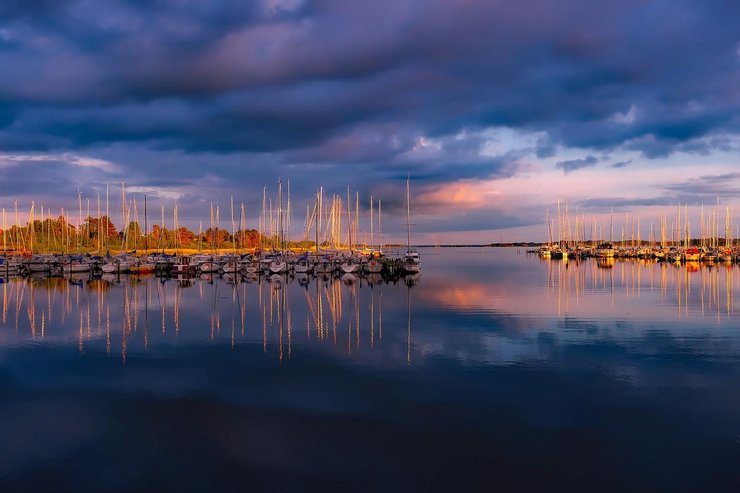🏠 | ArchDVICES: Lightening 🔆 | Part 1
[As an architect and a person who loves to share knowledge, I decided to prepare a series of educational posts related to various architectural issues, which I named ArchDVICES.]
In this topic we will focus on the importance of the lightening. I live in Denmark, in the north of Europe, where the matter of lighting is very important, so my research was based on this region.
Part 1:
· Introduction
· The important role of the light for our health and well-being
· Demands for the light presence in the building
· Sustainable lightening
· Characteristic of the Scandinavian daylight
Part 2:
· Daylight solutions to use during building design process
· Saving energy through technologies
· Lightening calculations
· Summary
Introduction
Every time when we start the project, one of the fundamental aspects of the creation of our building, is certainly its placement, corresponding to the daylight, so that the places that need it the most during the day, facing the south. It is easy, until you discover problem is more complex than you thought and the daylight in Denmark is something you need to ‘catch’, however is possible. We also need to remember about the artificial lightening to be created into the sustainable way.
ArchDVICES: Lightening contains what to consider during designing process according to the Scandinavian light conditions. It responds for the most basic questions like why people need the daylight and what it means sustainable lightening. It makes you understand how big role the daylight plays in our life and the definition of the actual target we suppose to achieve by all our activities focused on the lightening in the building. It shows actual demands for the light presence in the project, which should be known and restricted based on the well-being of users and their safety. It also includes characteristic of the Scandinavian daylight in order to realize with what we are dealing and finally giving actual solutions, idea of technologies and methods of measuring the light.
The important role of the light for our health and well-being
Daylight was always very important factor in human’s life. Historical examples presenting architectural structures which are created to use natural views and daylight for a healing process are 19th century Florence Nightingale Hospitals and 20th century hospital designs of Alvar Aalto and Richard Neutra.
Daylight have documented influence on human health and performance, is an effective stimulant to the visual and circadian system. Exposure to daylight can be both positive and negative.
Through evolution our eyes did not have a time to shape in the way to treat fluorescent light as natural one. The daylight creates for us better visual environment.
Characteristic for natural light is that – it’s always changing. Brightness depends on place in the world, date and time. Until today, randomness of the light in cloudy regions seems to be disadvantage. The true is changeability working stimulating for our brain.
Places without proper lightening or without windows, can cause disruption of the body clock. Bright-morning light has been used as a treatment for circadian rhythm disorders including irregular sleep.
Lacks of light is also the reason of Seasonal Affective Disorder (SAD) with two distinct categories: (1) melancholic (2) atypical/vegetative especially well documented in northern latitudes, normally appears late in the fall or early in the winter. People can suffer declines in concentration and performance, fatigue, sadness and irritability.
Surveys on children showed that, the ones in the class with daylight had less absences per year than children in the class with artificial light.
Not only lacks of light can be bad for our health. Prolonged exposure on the abnormal lightening does affect circadian rhythms and mood states.
There is two physiological benefits categories from light to our body: (1) light on the skin (2) impact of light on endocrine, hormone, and metabolic states
Our skin need to receive sunlight in order to get Vitamin D.
Demands for the light presence in the building
Natural light
After invention of electric lightening, with time, people realized how important role have saving energy and using daylight. Natural light started to be essential for good design in many building types. People expect visual contact with the outdoors and day-light inside their building, as deep into the building area as possible.
If a purpose of the room do not require it, every workspace in institutions and habitable room in a dwelling should have an access for the satisfactory daylight.
Every space needs different lightening, depends on the activities we perform there.
From my own experience, working in the office with small or without windows for many hours is an unimaginable torture. Every semester, I and my classmates are hoping to be assigned to the class with a glazed curtain wall. We do not feel there 'locked' and tired of working as in the classroom with smaller windows and less light.
In case, when the room cannot have windows, it should have at least exterior extension (solarium, atrium).
Artificial light
At the end of the day when the sun goes down, we need to use another sources of the light. Depends on the place, there can be different demands. Every room needs different light conditions, depends on activities holding there.
Lighting is also very important safety feature. Depending on the type and size of the building and persons on its territory, the various provisions should be applied: pedestrian and vehicle indicating the direction but not glare, visible stairs and ramps, common access marked by difference of materials, colors or lights, backlit, luminous or illuminated escape routes and exit signs.
Sustainable lightening
Wikipedia definition stated that “Sustainable Lighting is lighting designed with energy efficient light sources.”
According to Building Regulations 2015 (Denmark) energy-efficient lightening means use sources of light with 50 lm/W in general and 15 lm/W for work lamps and accent lightening, but the topic is more complex. Talking not only about electric lightening, but also about use of strategy and materials, which will allow to benefit from the natural light. Lightening structures must be built to achieve healthy conditions, but in the same moment to avoid unnecessary consumption.
We need to know proper volume of the light for the specific locations and performed activities. If the area is big, we should divide workspaces into the zones, depends on activities and daylight conditions. It means some kind of spaces may need more or less lightening in different parts of the room, for example, the entire office space should be uniformly illuminated in connection with people working on the computer. When evening comes part of desks by the window still has the appropriate level of light from the outside, while inside the room is already darker. We should take care of that by installing electric lighting divided into these zones. In this case, the solution would be to portion the illumination area for the two parts with different switchers (manual or automatic).
Places with common use and work must be provided with energy-sufficient lightening. We do not need to use daylight control if the room have limited access of the light. Motion detectors should be use for all the common places with occasional use. It can be omitted if the lights are not suitable for motion detectors or if there is a risk of accident. Some kind of lamps are not adequate to use with daylight control and motion detectors, for example vapor lamps.
Characteristic of the Scandinavian daylight
To solve the problem, we always must to know the cause. We need to understand what is typical for the light in the northern region of Europe. A lot of international students come to Denmark getting used to the environment in their country. For example, Spanish who never bothered by the lack of light, and even tried to avoid it, probably at the beginning of the project will forget that such a problem exists. When we are aware of it from the beginning of our work, we can create a building with a great potential of the light, from the scratch.
Denmark, Sweden, Norway and Finland are countries of climate and sun extreme variations. We can see here unique conditions of the light. Scandinavian countries shares subdued light creating specific brooding character of this region. It produces mixture of realism and magic, what is fantastic especially for artists. Some of Nordic early modern architecture masters, inspired by painted master arts from the previous century, decided to explore it. Alvar Aalto and Erik Bryggman in Finland, Gunnar Asplund and Sigurd Lewerentz in Sweden, and Arne Jacobsen in Denmark were naturalizing simple volumes by covering them with a light distinct to the North. In this way, instead of formal and stress lightening typical for Modernism, they were getting diffuse light.
Problems with overheating occur very rarely. Even in the summer, because of the low angles of incidence and atmosphere, light is not so intensive. Anyway, shadings should be used. Most of the winter sun hardly climbs over the horizon, it is noticeable in the south, in this way all direct light come almost from one direction at around noon.
Part 2 coming soon...
I hope you enjoyed and learned something new! 💙
Waiting for your opinions and suggestions for the future posts.
Feel free to re-steem! Follow me for daily posts!





